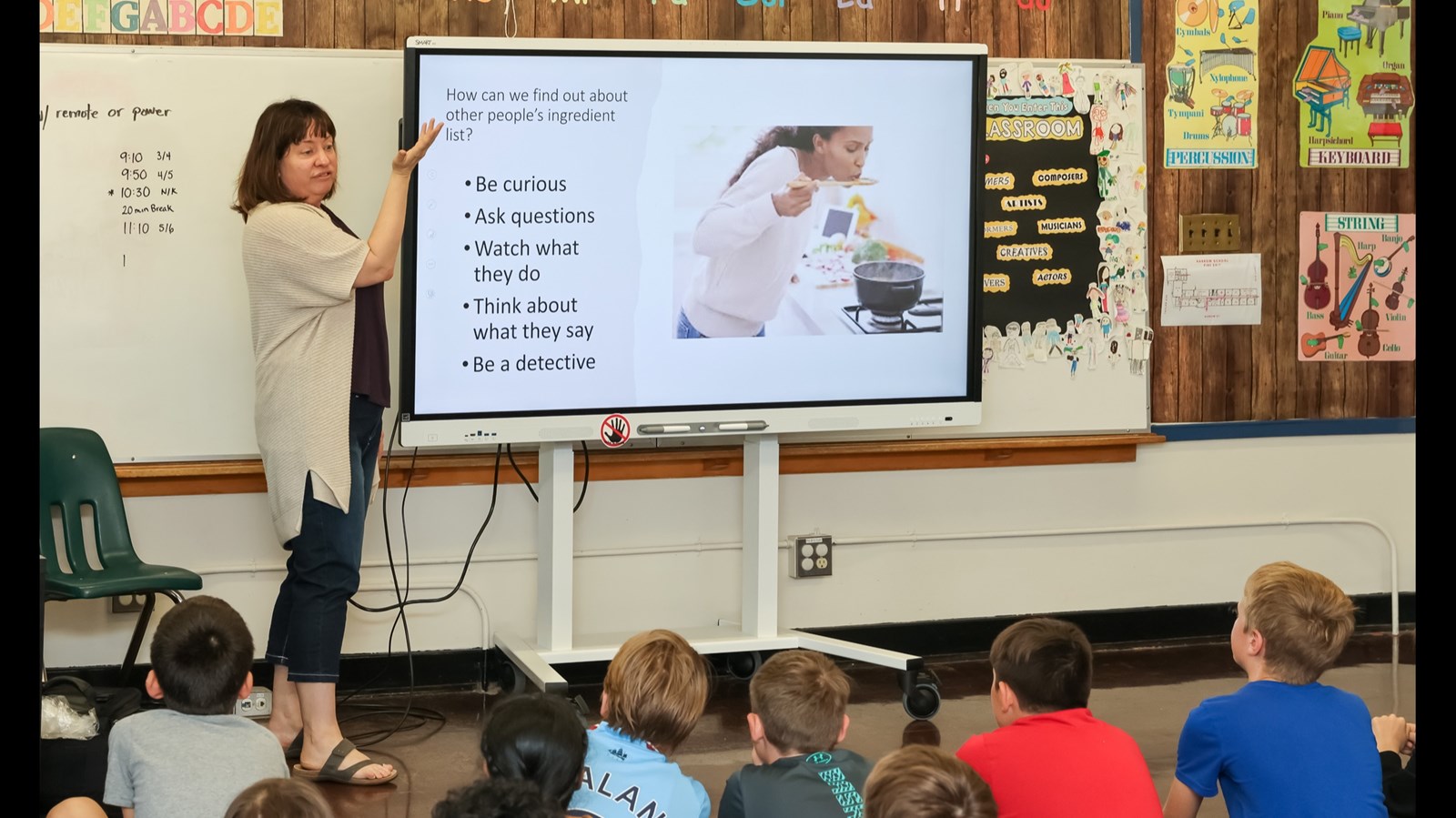Learning About Neurodiversity: Harrow School Students Explore Different Minds
June 27, 2024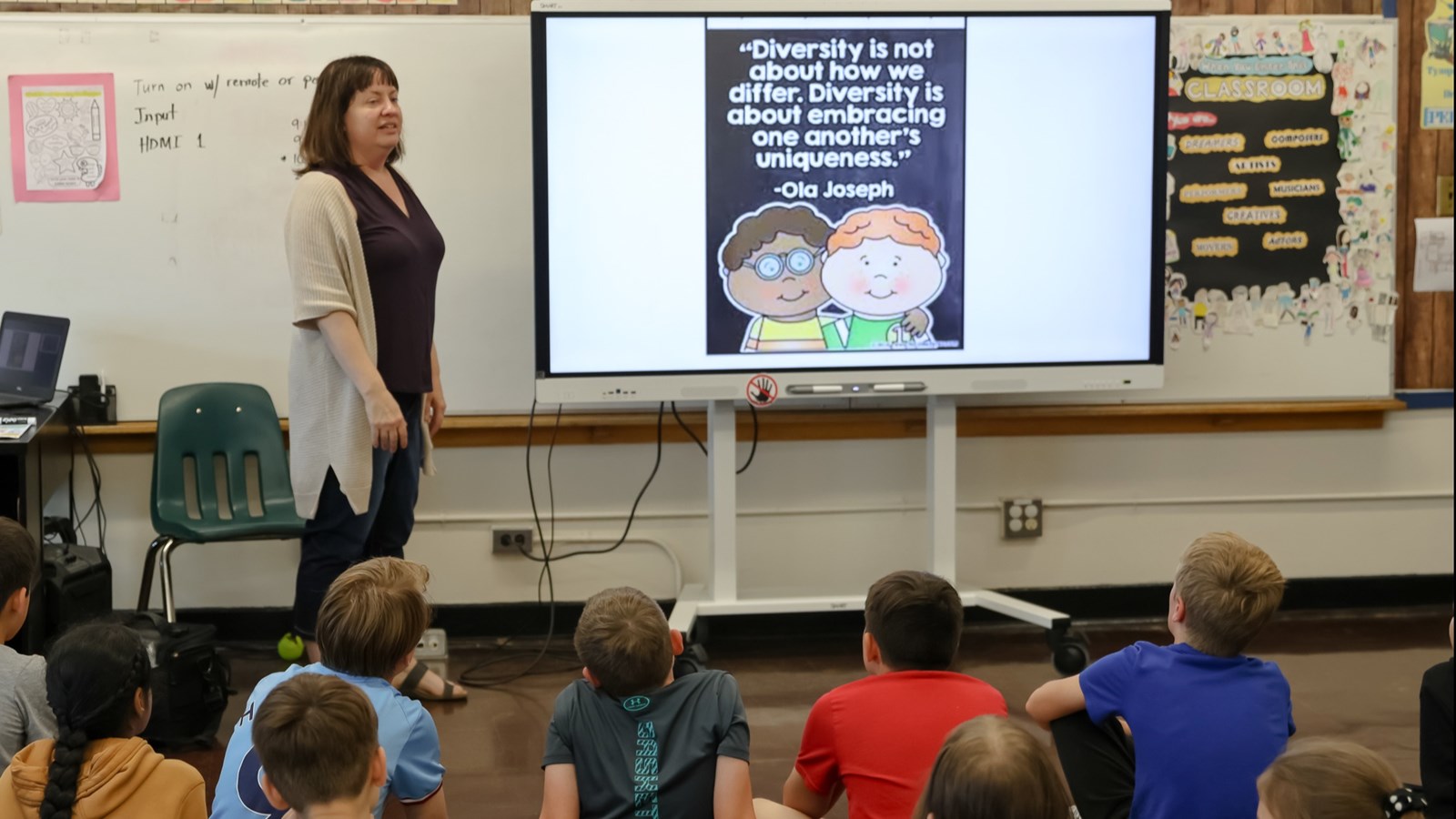
On June 12th, Harrow School students learned about neurodiversity under the guidance of Sherri Rice, a psychologist from the Winnipeg School Division's Clinical Support Services team.
Neurodiversity is a concept that means brains come in all shapes and sizes, just like people! Some brains work a little faster, some like to take things slow, and some see the world in a different way. It's all perfectly normal!
Ms. Rice explained the purpose of her visit, highlighting the growing movement around neurodiversity. "We celebrate all types of diversity, and our classrooms are full of neurodiversity," she said. "There are children with ADHD, autism, and a wide range of needs, diagnosed and undiagnosed. Understanding how these differences affect learning and working together is key to creating an inclusive environment."
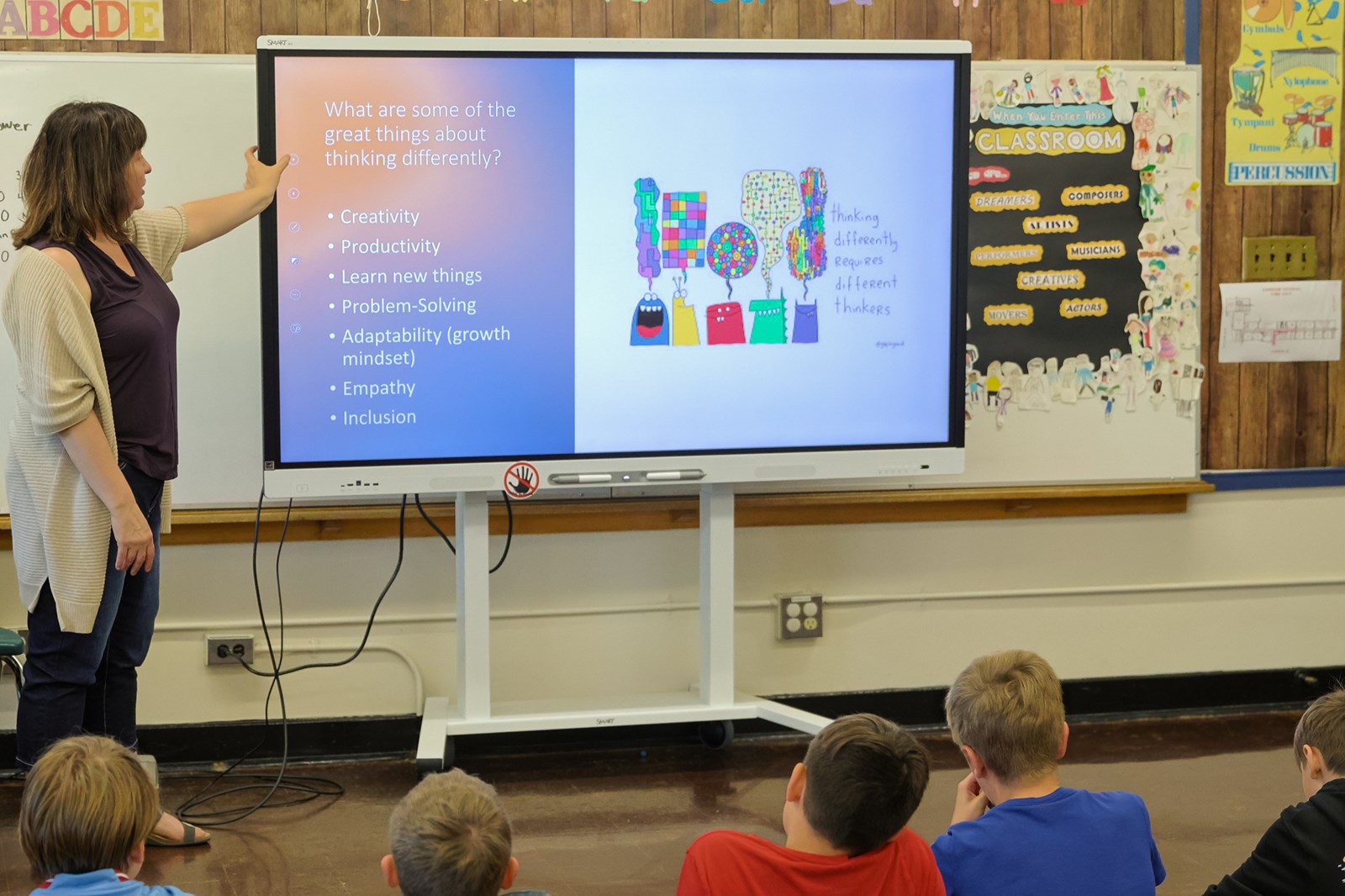
Ms. Rice presented the concept of neurodiversity, emphasizing that it's not just about accepting different ways of thinking but also about celebrating and appreciating them. "It's about understanding the benefits each type of mind brings to the table," she explained. This knowledge can help students not only understand why classmates might work differently but also appreciate their unique contributions. It will also help students improve their social skills and interactions in the classroom.
Ms. Rice showed successful examples of people who have brains wired differently and explained the positives of Neurodiversity, which are:
- People with ADHD have high levels of spontaneity, courage, empathy, drive, and creative thinking.
- They can hyper-focus on certain tasks.
- Those with autism pay attention to complex details, have good memories, and show certain "specialty" skills.
- People with dyslexia can perceive certain kinds of visual information better than others.
- This skill can be useful in jobs like engineering and computer graphics.
- Experts think the genes for these developmental "disorders" stick around because they come with evolutionary advantages.
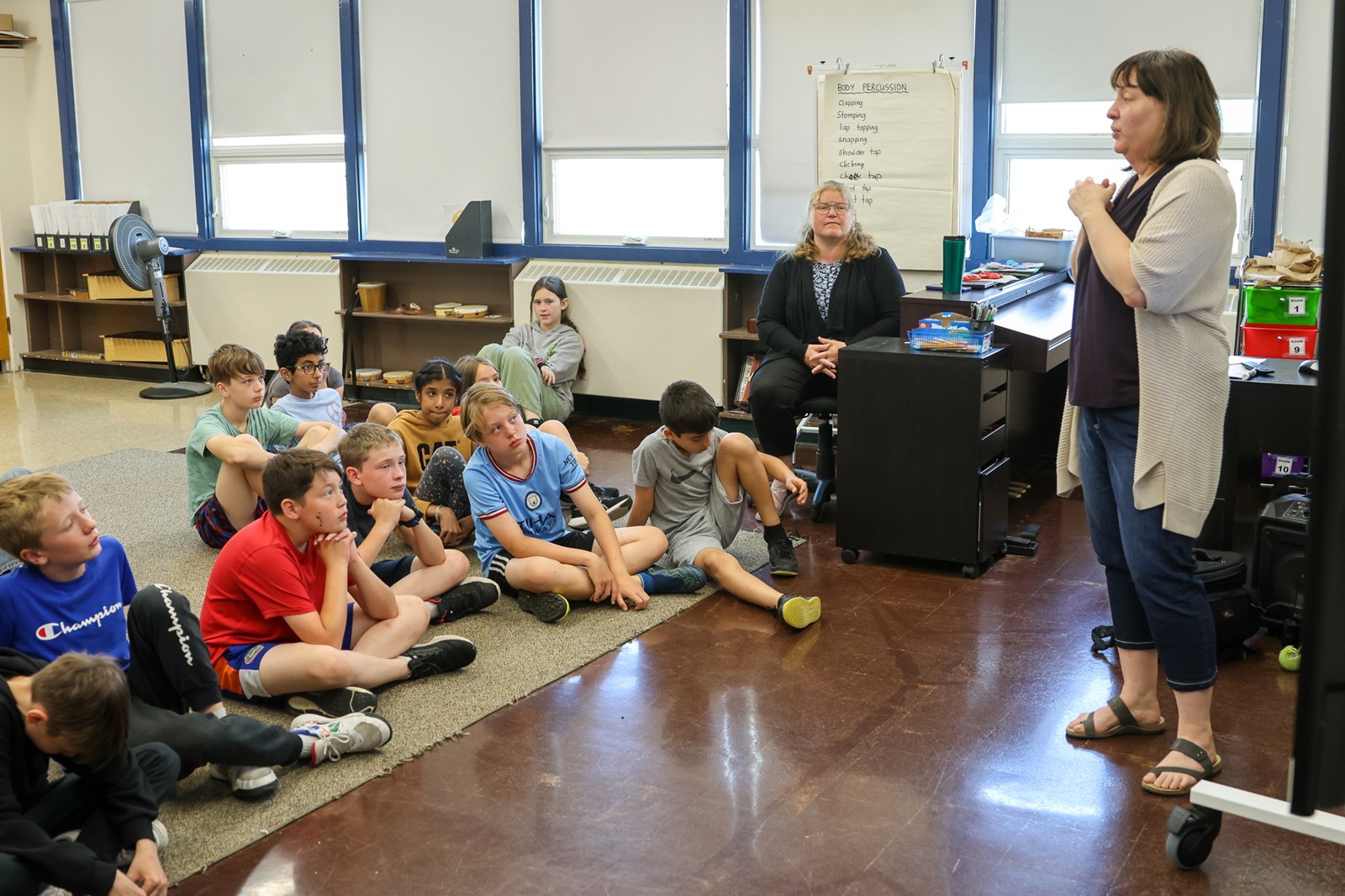
Students actively participated in the session, asking insightful questions. Cole Stewart, a Grade 5 student, reflected on the importance of diversity, "We're all different and unique in our own way. We need different minds to bring different ideas, and if everyone were the same, we wouldn't be able to do everything that we can right now."
Niata Denay, another Grade 5 student, emphasized the importance of empathy and understanding. "Everyone's brain is different, and we all learn differently," she said. "We should treat each other kindly and remember that everyone has different needs. By supporting each other, we can all have a better learning experience at school."
Zareef Peyawary, a Grade 6 student, shared his personal experience with ADHD. "The presentation was really helpful," he said. "It clarified that ADHD and autism are different. I have ADHD, and I learned that even people with the same diagnosis can be different. It's important to ask questions and get to know each other better so we can all work together respectfully.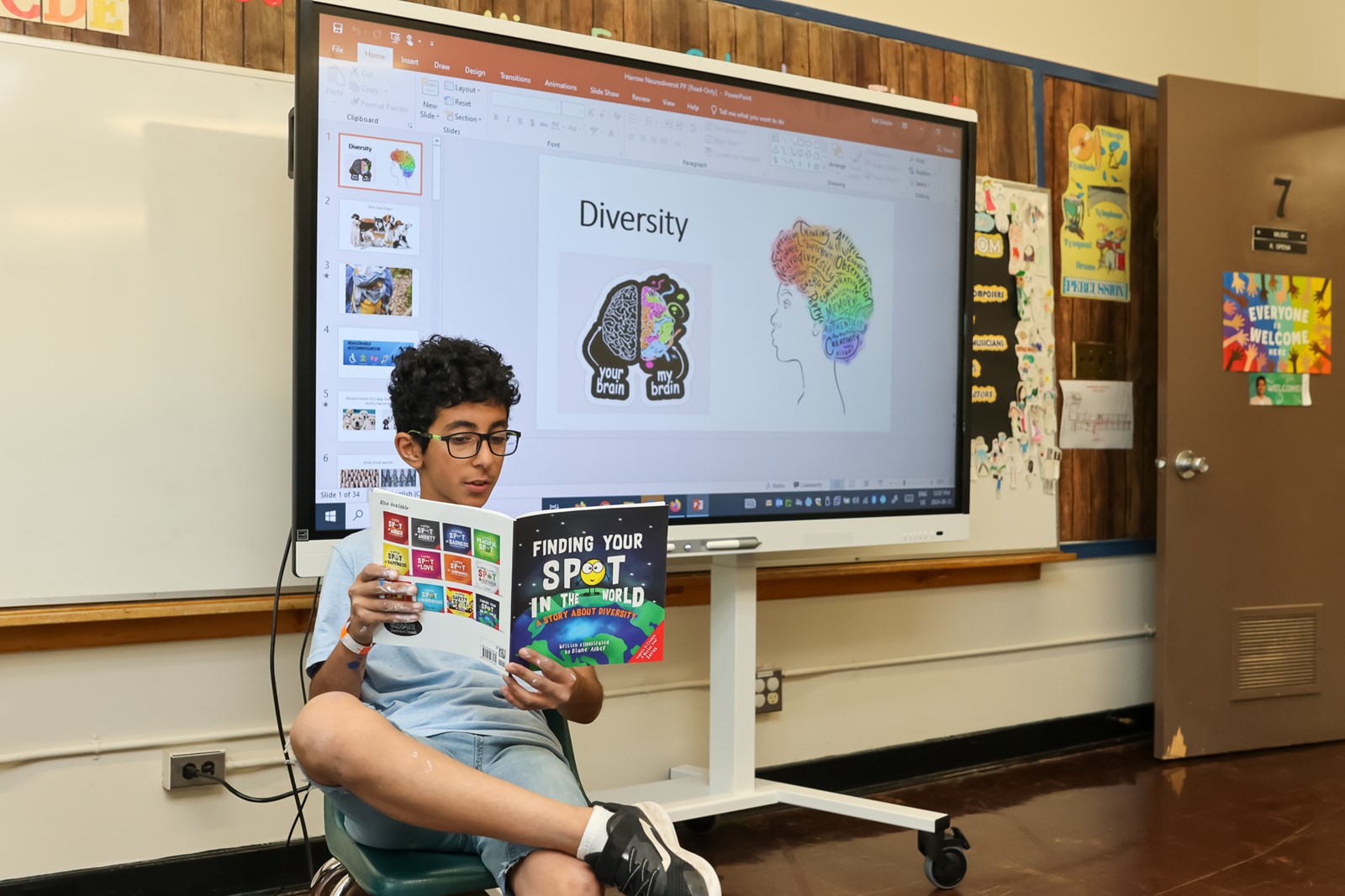
Ms. Rice presented to eight classrooms at Harrow School throughout the day. The Clinical Support Services department has held professional development sessions with many teachers this year, and next year, they plan to continue discussions with educational assistants, teachers and students in all WSD schools.

